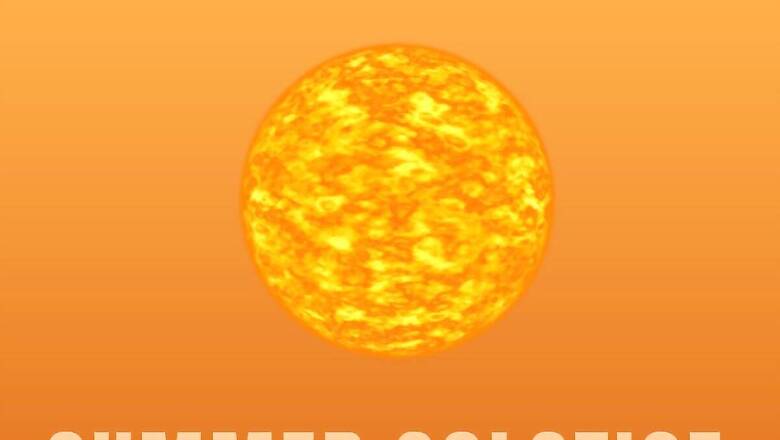
views
SUMMER SOLSTICE 2023: The Summer Solstice is the longest day of the year, typically occurring between June 20 and June 22. It is referred to as the midsummer or Estival solstice and derives its name from the Latin words “sol,” meaning the sun, and “sistere,” meaning to stand still. This name reflects the apparent pause of the sun in its seasonal journey, as it reaches its highest point in the sky. The Summer Solstice holds cultural, historical, and scientific significance and is observed and celebrated in various ways around the world.
WHEN IS THE SUMMER SOLSTICE IN 2023?
In India, the Summer Solstice is set to occur on Wednesday, June 21, at precisely 8:27 pm. It’s crucial to understand that the solstice is a specific moment and not an entire day, contrary to a common misconception. This astronomical event heralds longer days for the northern hemisphere.
WHAT CAUSES IT?
The summer solstice, occurring in the Northern Hemisphere, signifies the longest day and shortest night of the year. Conversely, in the Southern Hemisphere, it represents the shortest day and longest night. This celestial event is a result of the Earth’s axial tilt, approximately 23.4 degrees relative to its orbital plane around the sun.
As the Earth orbits the sun, different regions receive varying amounts of sunlight, leading to the changing of seasons. During the summer solstice, the Northern Hemisphere is tilted towards the sun, resulting in extended periods of direct sunlight. This translates to longer daylight hours, a higher sun angle, and increased heating, leading to warmer temperatures.
In contrast, the Southern Hemisphere experiences its winter solstice during this time, being tilted furthest away from the sun.
The specific date of the summer solstice varies slightly each year, typically falling between June 20 and June 22, depending on the Earth’s position in its orbit. This astronomical occurrence signifies the sun reaching its highest point in the sky.
Culturally, the summer solstice holds great significance and has been celebrated in diverse ways throughout history. Festivals, rituals, and gatherings are held to commemorate this celestial event for centuries.




















Comments
0 comment